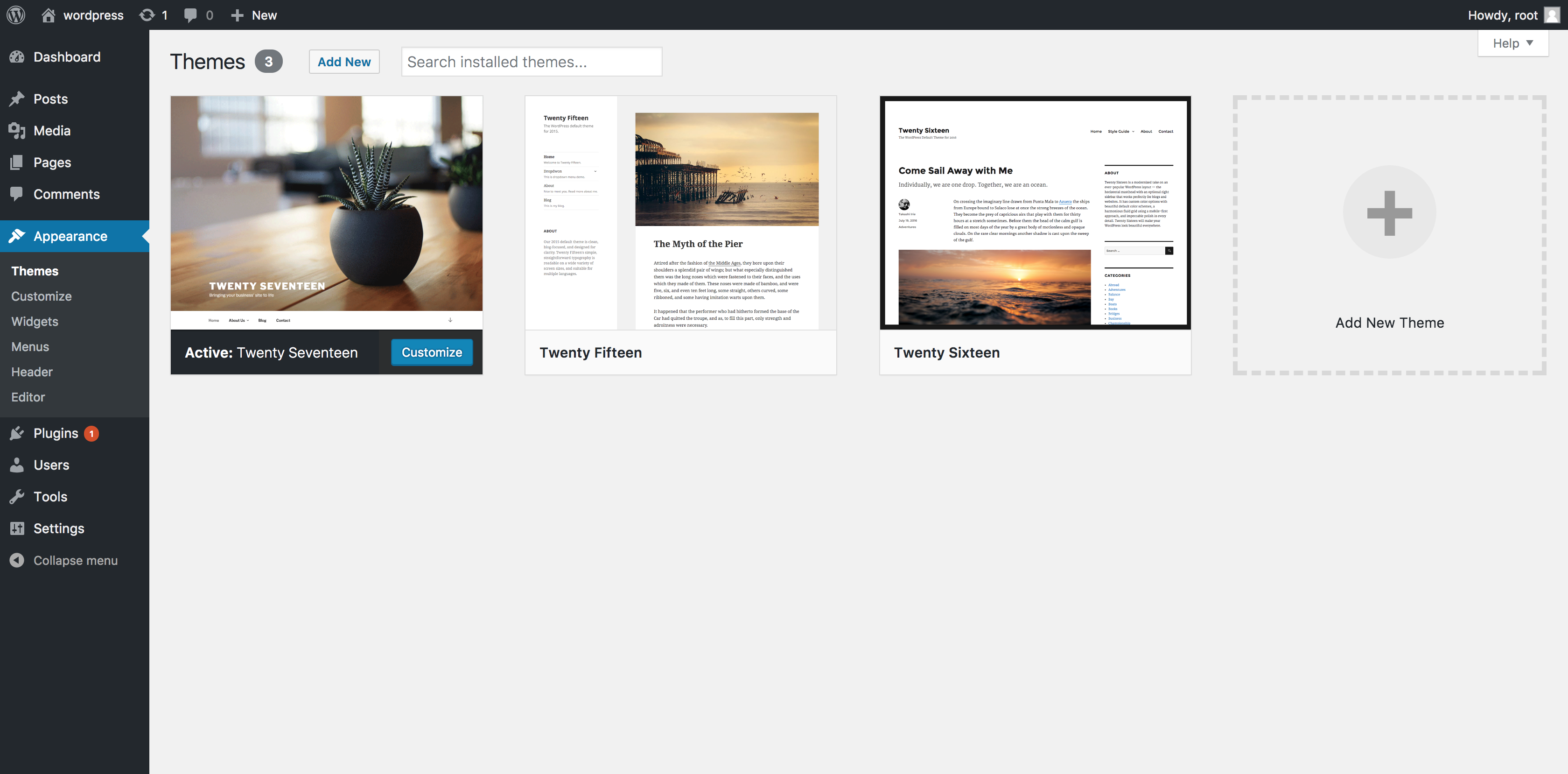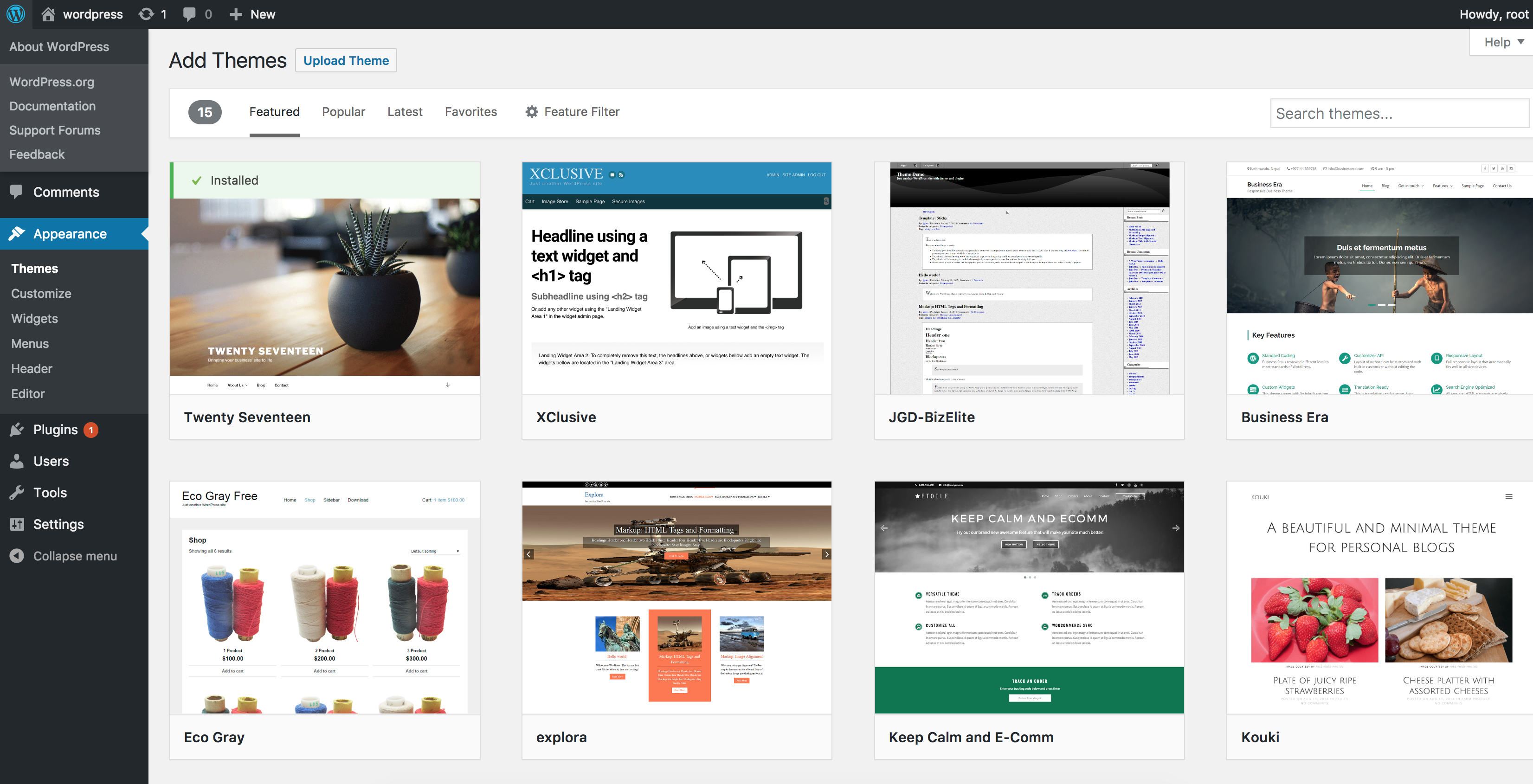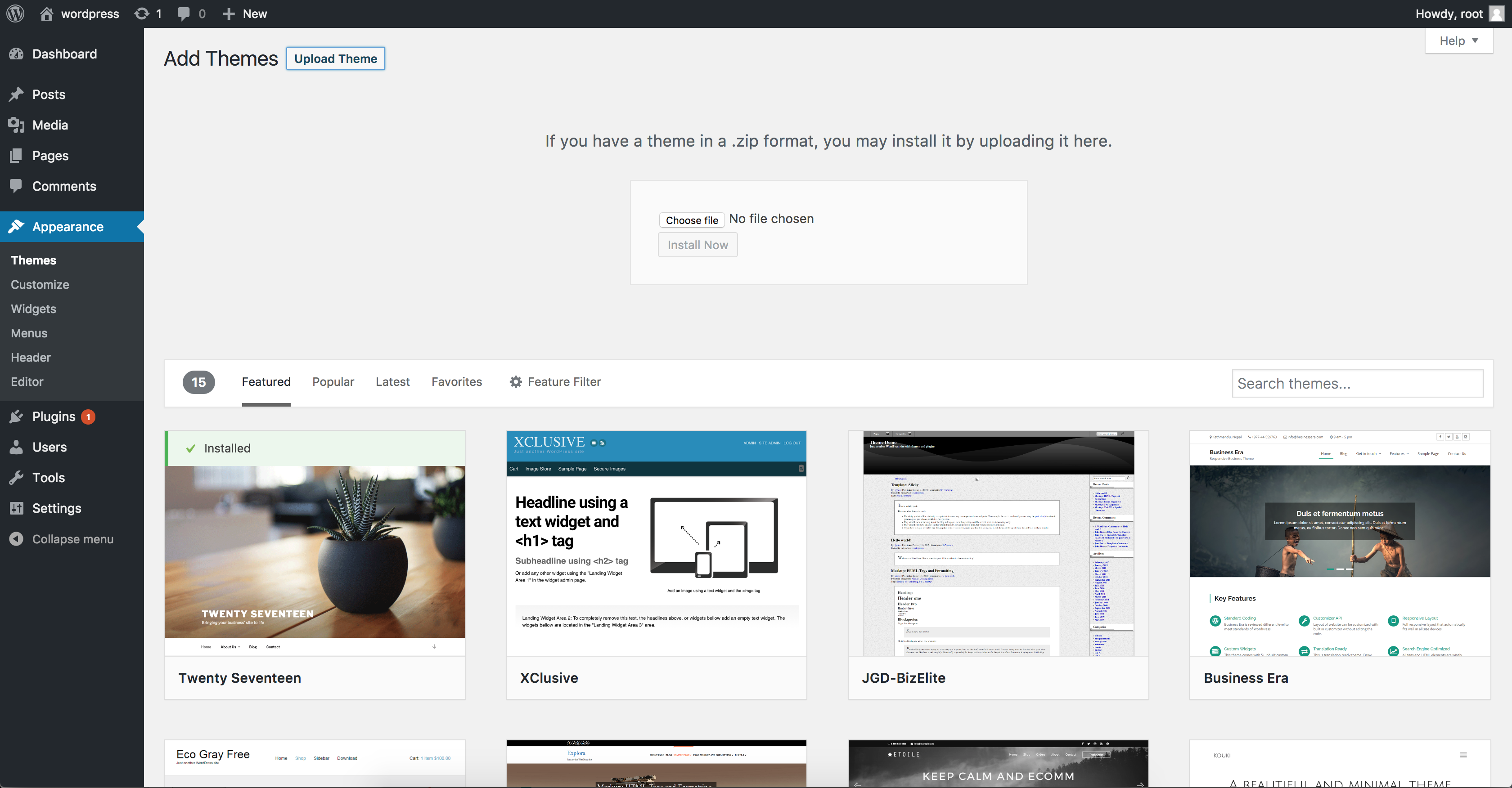WordPress themes play a critical role in your site. They create the look and feel of your entire site in just a few clicks, with no coding required. You can find free themes in the WordPress directory, or install premium themes from third-party sites. Many free themes are ideal for those who want to tinker with their code, but paid themes offer extra support and more features for a website tailor-made to your needs.
Using the WordPress themes directory
If you haven’t chosen a theme yet, head over to the WordPress theme directory. It holds official WordPress themes, that have been checked and inspected against WordPress theme guidelines. They are also free to download. There are thousands of themes in the directory; this is where the WordPress theme search function comes in handy.
Use the theme search bar if you know the name or style of theme you want. The Feature Filter in the theme search function will narrow down the results. You can select your preferred layout format, which features you need, and the subject of your site. You might be looking for a single-column layout for a photography blog that features an animated background, for example.
You might want to browse for inspiration using the tabs for Featured Themes, Most Popular Themes and the Latest Additions to the directory. For more options, use the theme search to browse commercially supported GPL themes. These paid services include more support and are fully compliant with the WordPress General Public License.
WordPress theme install
Before you can vamp up your site with themes, you need to install and activate them in your WordPress admin. These are the basic steps for most themes:
- Log in to your WordPress admin page, then go to Appearance and select Themes.
- To add a theme, click Add New. From this page, you have two ways to add a new theme. If you know the name of the theme you want, search for it in the Theme directory. If you don’t know your preferred theme’s name, use the Feature Filter to hone down your selection, check any tags and click Apply Filter for a screen filled with themes that meet your search criteria.
- To unlock a themes options, hover over it; you can either choose Preview to see a demo of the theme or install it by clicking the Install button once you’re ready. Once installed, click the Activate link.
- You’re all done, now preview your site to see how it looks.
We recommend reading through any instructions that come with your chosen theme regarding installation. Some themes will require more steps than others, going beyond the basic steps covered here. Follow the instructions provided, and if you run into any problems, contact the theme’s author for help.
Download WordPress themes
If you purchased a theme from a developer that operates outside of the WordPress themes directory, you need to upload it before installing. Follow these simple instructions to upload and install a theme.
- Begin by downloading the theme’s .zip file from the source onto your local computer.
- From your WordPress Administration area, head to Appearance > Themes and click Add New.
- The Add New theme screen has a new option, Upload Theme.
- The theme upload form is now open, click Choose File, select the theme zip file on your computer and click Install Now.
- The theme is now ready to be activated from your admin. Select the Appearance tab and open the Themes directory, locate the theme and click the Activate link.
How to install WordPress themes using FTP
If you have a WordPress theme on your local computer, it’s possible to install it using File Transfer Protocol (FTP). By using this method there is a risk of deleting or modifying files, which could bring your site offline. For this reason, we advise that only advanced users install themes this way. To use the FTP to add new themes manually, follow these steps.
To begin, you must have an FTP hostname, username and password, and an FTP client. We’ve used FTP client Filezilla to show the steps in this tutorial.
- Launch Filezilla, enter your login details and click Quickconnect.
- The following window contains Remote Site and a root directory (the root directory is your site’s name). Select /rootdirectory/web/content/wp-content/themes.
- In the Local Site window, select the folder containing your saved theme, right click for more options and hit Upload.
- You’ve now successfully uploaded your theme to WordPress. To finalize, log in to your control panel, head to Appearance > Themes and hover your mouse over the new theme. Now click Activate.
- You’ve now successfully uploaded your theme to WordPress. To finalize, login to your control panel, head to Appearance > Themes and hover your mouse over the new theme. Now click Activate.
- All that’s left is to check out your new theme and see how you like your new site design.
Apply a template to individual pages
Now that your theme is installed and activated you can start setting it up according to the needs of your website. The next step is to begin applying templates in the theme to pages. This can be handled simply via the WordPress Page Editor by following these instructions:
- Open the WordPress Page Editor. If your page has applicable templates, you’ll find them listed in the Page Attributes box to the right of your content.
- Select a template, and click Preview to decide if the template suits your page before saving.
- Once you’re happy with the page template, click Publish.
Safely changing WordPress themes
It’s fairly easy for new site owners to change their WordPress themes, you need only select a theme and install it. If you have an established WordPress site, changing the appearance of your entire website is a major step. We highly recommend backing up your site before doing so.
Changing themes can be intimidating, but that shouldn’t stop you embracing a new look for your website. Once you’ve made a backup, follow these guidelines to prepare for changing themes.
Keep themes updated
A final note on themes is to keep them updated. It takes a small amount of effort to update the core WordPress themes. Updating themes is worthwhile, each update adds new features and enhancements, such as better security and SEO.
It’s possible that by keeping themes up to date, you may cause some problems for your website. Customized pages can be affected, and settings lost during an update, for example. To counter this, we recommend child themes. These facilitate a successful theme update without losing any of your modifications. Follow this guide to check if your theme is safe to update with child themes.



